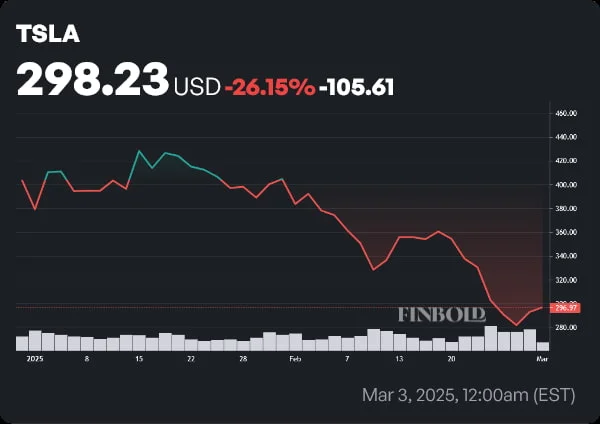Real-Time BNB Signal Analytics
Real-Time BNB Signal Analytics
[Generated Title]: Tesla's Record Revenue Is a Smokescreen for a Deeper Problem
Two numbers defined Tesla’s third-quarter earnings release, and they are in direct opposition. The first is the one the company wants you to see: record revenue. It’s a big, impressive figure, a testament to the automaker’s continued ability to move an astonishing number of vehicles off the production line and into driveways. It fuels the narrative of relentless, unceasing growth.
The second number is the one that actually matters. It’s the 31% year-over-year decline in earnings.
In the disconnect between these two figures—soaring sales and sinking profit—lies the entire story. The market, for its part, is not easily distracted. In the moments after the numbers hit the wire, as detailed in reports like TSLA Earnings: Tesla Reports 31% Drop in Q3 Earnings amid Record Revenue - TipRanks, I watched the ticker for TSLA dip and weave in after-hours trading, a jittery dance of institutional algorithms sniffing out the truth. The reaction was clear: the headline revenue figure is a smokescreen, and behind it is a far more troubling reality about the cost of growth.
Let’s first address the top-line numbers, because they are, on the surface, impressive. Tesla posted record revenue and record global vehicle deliveries. The bull case writes itself: more cars sold than ever, more money coming in the door than ever. This is the data that fuels the die-hard fan base, the believers who see an unstoppable force conquering the automotive world.
But a number without context is just noise. The surge in deliveries wasn’t purely a function of organic, explosive demand. It was heavily influenced by a classic, predictable human behavior: rushing to beat a deadline. Buyers were scrambling to take delivery before a federal EV tax credit was set to expire or change. It’s the financial equivalent of a store announcing a "going out of business" sale—of course, you’re going to see a spike in foot traffic. You are, in effect, pulling demand forward from the future.

This creates an analytical black box. How much of Q3’s record delivery number was sustainable, and how much was simply borrowed from Q4 and the following year? The data doesn’t give us a clean answer, but it forces us to ask a critical question that the simple "record deliveries" headline completely ignores: What does the demand curve look like when the artificial incentive is gone? Is there a cliff waiting on the other side? This isn't a critique of the company's product, but a methodological critique of how we interpret the data. A one-time catalyst can easily be mistaken for a long-term trend.
Now, let’s turn to the number that sent a chill through the market. The 31% drop in earnings is a direct result of margin compression. Simply put, it’s costing Tesla more to build and deliver each car, and that is eating away at the bottom line. For years, the core thesis of Tesla’s valuation was built on the promise of manufacturing scale. The idea was simple: as production ramped up, efficiencies would drive costs down, leading to software-like profit margins on a hardware product.
This quarter’s results are the most significant challenge to that thesis we have seen in years.
Rising costs across the supply chain, from raw materials (particularly lithium) to logistics, are no longer a theoretical problem but a tangible drag on profitability. The company’s automotive gross margin, a key metric watched by every serious analyst, contracted. While revenue was up about 56%—to be more exact, 55.95%—the cost of that revenue grew even faster, leading to the profit decline. And this is the part of the report that I find genuinely puzzling. For a company so defined by its vertical integration and supposed control over its own destiny, this quarter revealed a vulnerability to the same mundane, real-world economic pressures that every other automaker on the planet faces.
It’s a signal that Tesla is transitioning from one kind of company to another. It is leaving the rarified air of a hyper-growth tech story, where profits are secondary to expansion, and entering the grinding, terrestrial world of a mass-market manufacturer. In this new world, margins are king. You don’t get valued on dreams; you get valued on your ability to consistently and predictably convert revenue into profit. The after-hours stock slump wasn't panic; it was a quiet, sober recalibration of expectations. It was the market acknowledging that gravity is, at last, beginning to apply.
For the better part of a decade, Tesla has been a story about the future. It was valued not on what it was, but on what it was going to become. The numbers from this quarter suggest a fundamental shift in that narrative. The company is no longer a startup defying the odds; it is a major industrial corporation facing the brutal physics of global manufacturing. Record revenue is a fine talking point, but the erosion of profitability is a fact that cannot be spun. The real story isn't about how many cars Tesla sold; it’s about how much it cost them to do it. And right now, that cost is rising faster than the sales, a trend that, if it continues, will anchor the company's valuation to a reality far closer to earth.